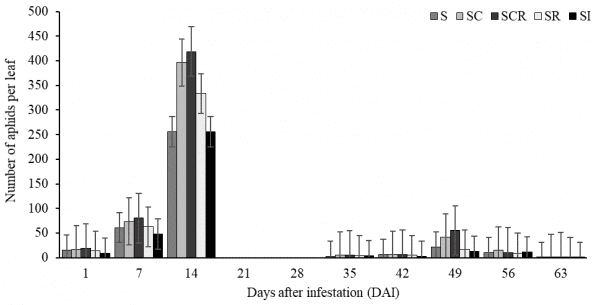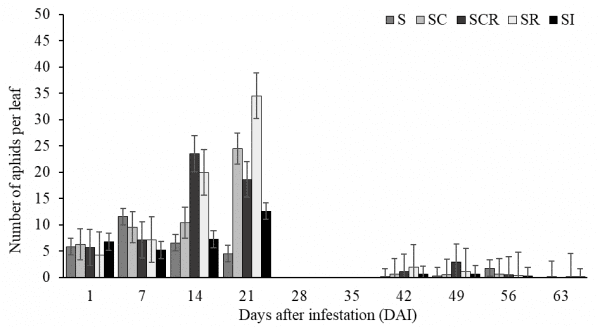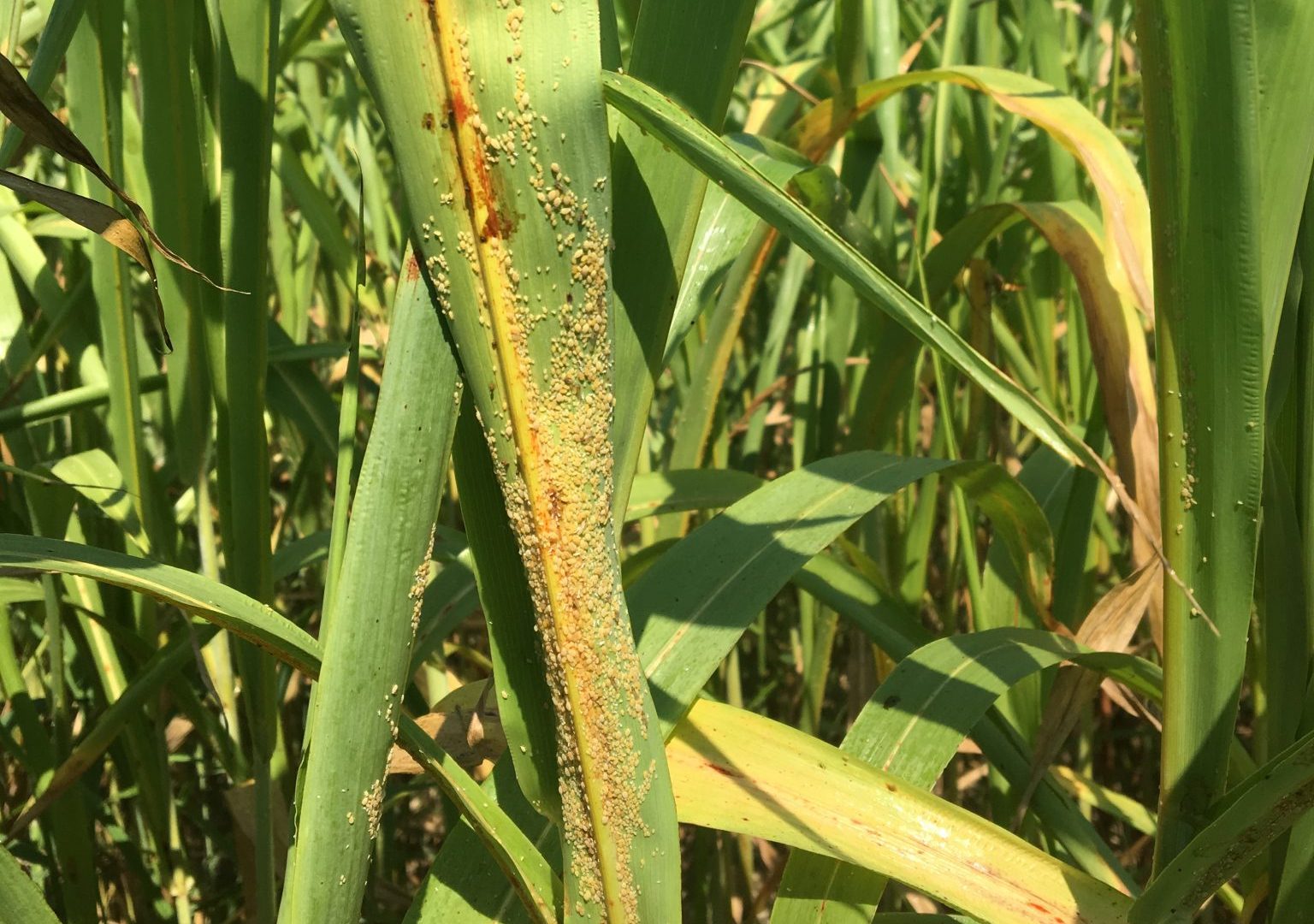Farming

This information highlights the results of a two-year small plot study evaluating warm-season annual forage mixtures for yield, nutritive qualities, and sugarcane aphid incidence in Shorter, Alabama (2018-2019).
Warm-season Annuals
Warm-season annuals are high yielding and contain a high nutritive quality, making them an ideal forage option during the hot summer months. They are often more nutritious and have more rapid growth than perennial warm-season forages. However, they may have a shorter growing season and have a higher establishment cost because of the need for yearly reestablishment. The warm-season annual forages utilized for this project were sorghum × sudangrass, cowpea, and large crabgrass.
Sugarcane Aphid Concerns
Sugarcane aphids are a pest of sugarcane and sorghum that have recently become a concern in the Southeastern region of the United States. They may become an issue in forage production for producers seeking to utilize sorghum or sorghum hybrids in their programs. Sugarcane aphids suck sap out of the plant’s xylem, reducing the nutrients available to the plant, as well as producing a black, sooty mold, which may reduce the plant’s ability for photosynthesis as well as gumming up harvesting equipment. Through these methods, sugarcane aphids are able to reduce both forage quality and harvesting efficiency, causing losses to the producer.
Treatment Evaluation and Management
Plots were planted in mid- June using a no-till drill. The seeding rates that were used are listed in Table 1. Plots were fertilized with 156 pounds of nitrogen per acre and with phosphorus, potassium, and lime according to soil testing recommendations. Flupyradifurone (Sivanto 200SL®) was applied to the insecticide treatment at 4 oz per acre within a week of the appearance of sugarcane aphids. In both years of the study, plots were harvested twice, once at the end of July and the beginning of August and once in mid-September. Forage dry matter yield was averaged across harvests.
Table 1. Seeding Rates
| Forage Treatment | Treatment Abbreviation | Seeding Rate (lb PLS/a) |
|---|---|---|
| Cowpea | C | 18.3 |
| Large crabgrass | R | 2.9 |
| Cowpea + large crabgrass | CR | 9.4 + 1.6 |
| Sorghum × sudangrass | S | 11.3 |
| Sorghum × sudangrass + cowpea | SC | 5.7 + 9.4 |
| Sorghum × sudangrass + large crabgrass | SR | 5.7 + 1.6 |
| Sorghum × sudangrass + cowpea + large crabgrass | SCR | 3.7 + 6.1 + 1.2 |
| Sorghum × sudangrass + flupyradifurone (Sivanto 200SL®) | SI | 19.4 |
Conclusions
There was no difference in forage dry matter yields between treatments. Crude protein was greatest in cowpea compared to all other treatments, except for cowpea + crabgrass. Neutral detergent fiber concentrations were least in treatments containing cowpea. Concentrations of acid detergent fiber were not different between treatments.
Table 2. Forage Yields and Nutritive Qualities
| Treatment | Forage Dry Matter Yield (lb dry matter/ acre) | Crude Protein (%) | NDF (%) | ADF (%) |
|---|---|---|---|---|
| C | 1353 | 12.75 | 55.45 | 29.7 |
| CR | 1363 | 11.9 | 55.7 | 29.05 |
| R | 1282 | 8.4 | 65.7 | 29.35 |
| S | 1212 | 8.65 | 65.7 | 29 |
| SC | 1426 | 10.95 | 58.1 | 28.7 |
| SR | 1272 | 9.4 | 63.3 | 28.95 |
| SCR | 1289 | 10.7 | 59.3 | 28.9 |
| SI | 1712 | 8.45 | 64.8 | 28.05 |
Sugarcane aphid populations were at their greatest on the day of the first harvest in both years. They made a small rebound following the first harvest, but never reached the same numbers as prior to the first harvest. Populations were less in year two than in year one, which is likely attributed to a poor establishment of sorghum × sudangrass in year two. In year one, peak sugarcane aphid incidence was higher in SCR and SC when compared to S and SI. In year two, peak incidence was highest on SR and SC when compared to S and SI, and S was also less than SCR.

Figure 1. Sugarcane aphid population during 63-day period (from 7/12 to 9/13) in year one.

Figure 2. Sugarcane aphid population during 63-day period (from 7/11 to 9/12) in 2019.
Implications
While no differences were seen in yields, cowpea proved to be a good option for increasing nutritive quality in warm-season forage systems. Contrary to what was expected, sugarcane aphid populations were not reduced by mixing sorghum × sudangrass with other forage species, and this is likely not a good method for controlling sugarcane aphid populations. Applications of insecticide also did not reduce sugarcane aphid incidence on monocultures of sorghum × sudangrass. However, this is likely due to the insecticide being applied at a rate lower than what is recommended. Insecticide use is likely still the best method of controlling sugarcane aphid infestations. Producers who do not want to utilize insecticides should consider replacing sorghum × sudangrass with a forage species which is not susceptible to sugarcane aphids such as pearl millet.

